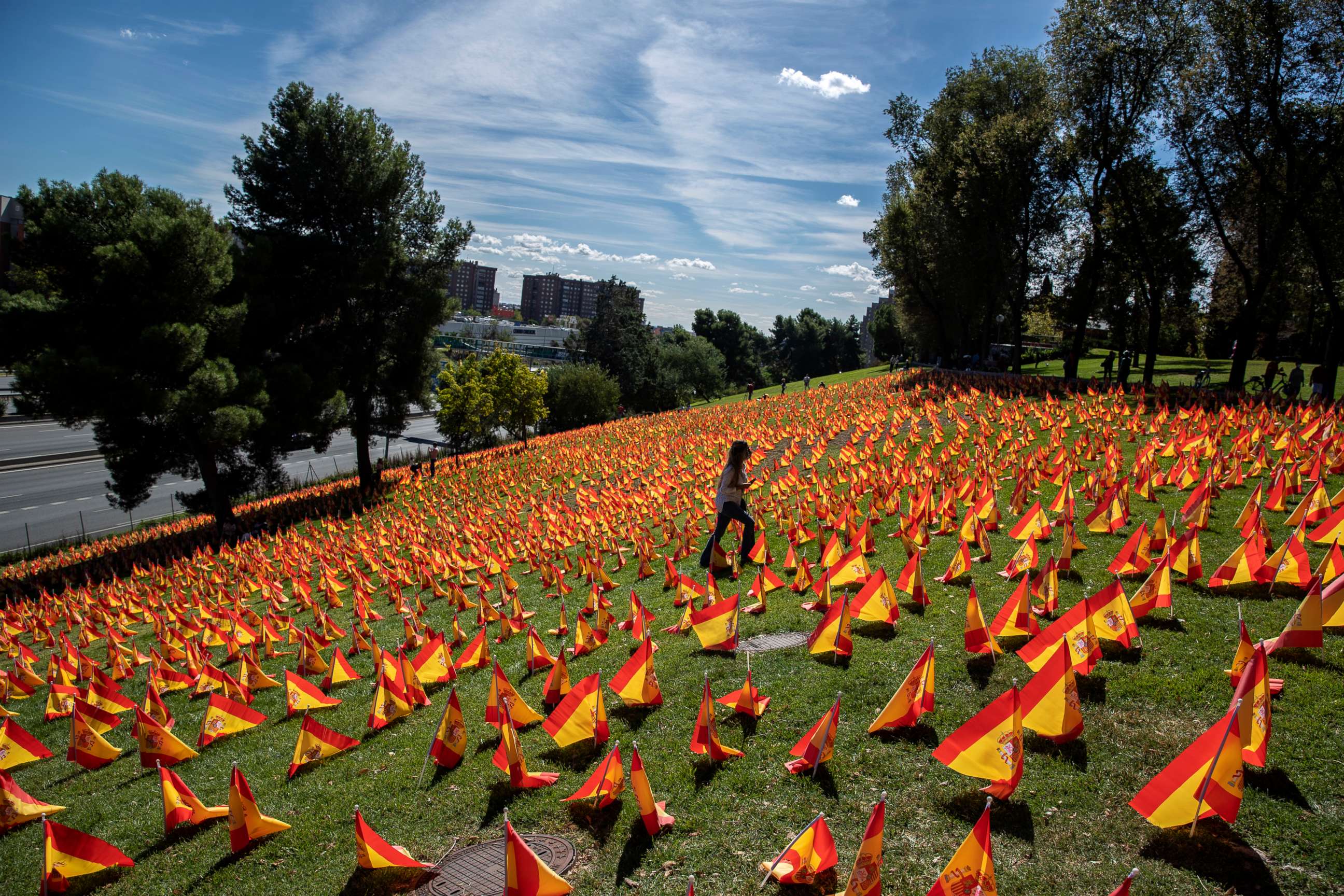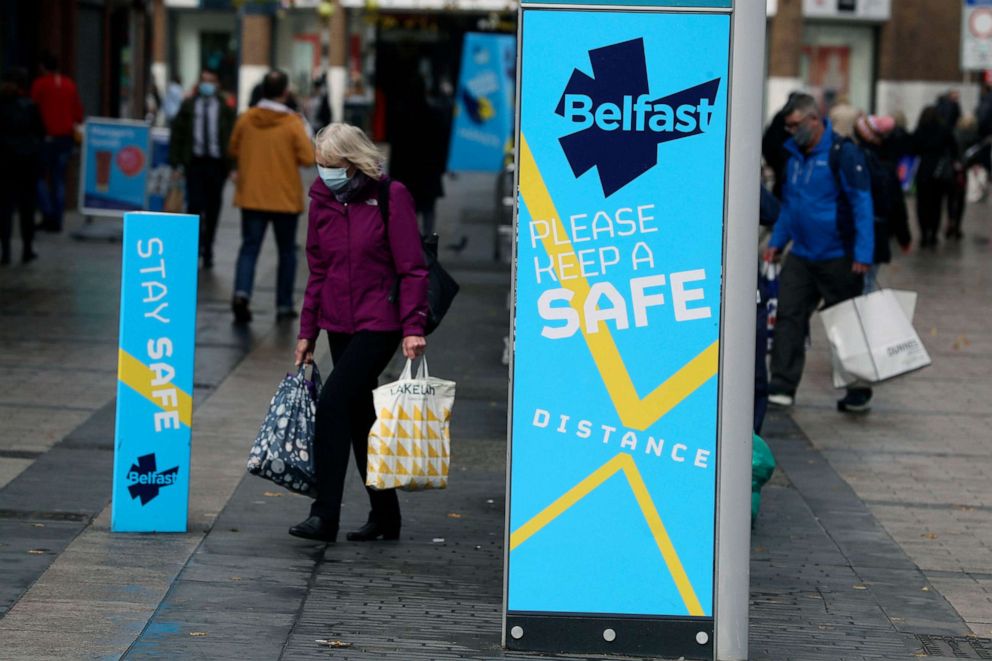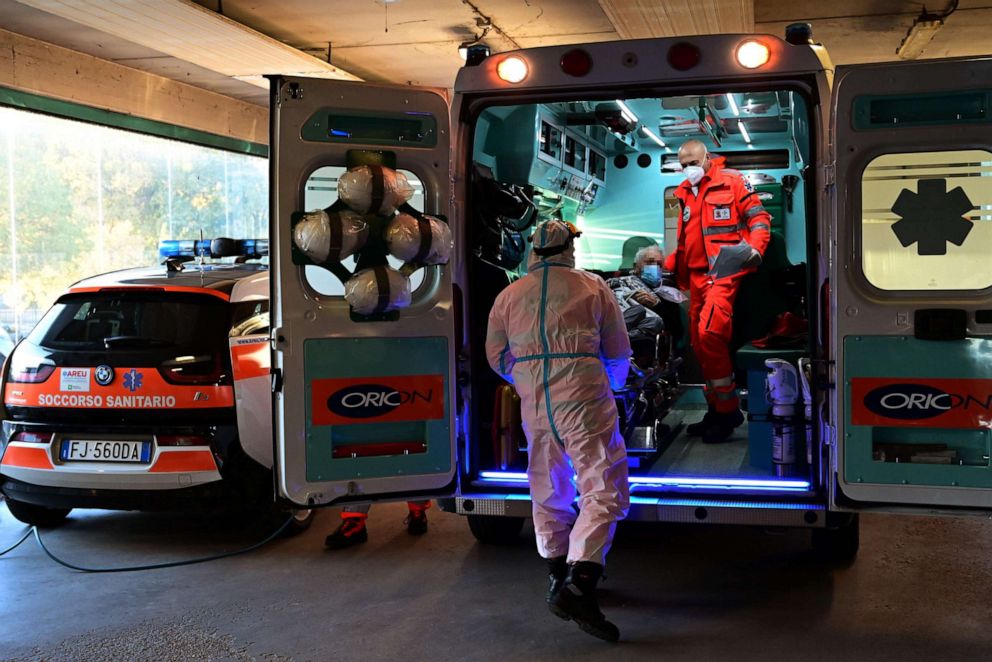Europe struggling with 2nd surge of COVID-19 case, and it may be worse than the 1st
The continent now accounts for 46% of global coronavirus cases.
Europe is now battling a second surge of COVID-19 cases, and many worry it could be worse than the first.
The continent now accounts for 46% of global coronavirus cases, and nearly a third of total related deaths. This month, both France and Spain have declared states of emergency, imposing more restrictions to try to ease up pressure on hospital ICU departments.
In France, more than half of ICU beds are occupied by COVID-19 patients, according to the Ministry of Social Affairs and Health.
Dr. Jean-Francois Delfraissy, a senior French physician and the president of the scientific council that reports to the government, warned that the country has "lost control of the epidemic," after health authorities reported more than 52,000 new cases. He said that the council estimates that the true figure could well be closer to 100,000 daily cases, accounting for asymptomatic cases and those who haven't been tested.

While European countries are testing citizens for the virus at a faster rate than during the first wave, in the spring, there are other trends that may explain why the virus has returned with a vengeance.
Research from King's College London and Imperial College London indicates that antibodies protecting people against COVID-19 have a limited presence in the body after infection -- a theory that has thrown arguments in favor of herd immunity into disarray.
Many European countries are global tourist destinations, and in the summer, after several months of nearly universal lockdown across borders, governments relaxed travel restrictions. This allowed families and tourists to travel -- both domestically and to nearby countries -- after spending several months at home.
But young people in Europe were blamed for spreading the virus as nations eased lockdown measures. The European Centre for Disease Prevention and Control reported that the median age of people infected declined from 54 during the period of January to May, down to 39 in June and July.

In September, fresh concerns were raised as schools and universities accounted for almost a third of new coronavirus cases, according to Public Health France.
But now, in late October, the virus is also spreading fast among the elderly. The number of infections among those older than 65 is now six times as high as in September, and there are five times as many hospitalizations, according to Public Health France.
Fearing both the economic price of national lockdowns and the political backlash from citizens increasingly wearied of the restrictions on their livelihoods, government officials around Europe have been reluctant to shutter businesses to the extent that they did in the spring.

Italy, originally the hardest-hit country in Europe, is now recording around 20,000 cases a day and a rate of deaths not seen since May. A string of violent protests -- aimed to communicate people's objection to the government's potential tightening of restrictions -- erupted across the country over the weekend.
New measures enacted include the closing of bars and restaurants after 6 p.m., and the complete closure of gyms, swimming pools, cinemas and theaters.
As the second surge of COVID-19 cases gathers pace, there are also mounting concerns over the pressure European hospitals will face -- as the resurgence of the virus has arrived around the same time as the annual flu season.
Health journal The Lancet last week argued that, in general, countries are "much better prepared" now than when COVID-19 first hit.
"But October also marks the beginning of the flu season in the northern hemisphere," the report read. "If both viruses surge simultaneously, even the best resourced health-care systems would be hard pressed to cope."
Still, a silver lining appears to be that the rate of deaths in Europe is not as high as it was during the first wave of the pandemic. Earlier this month, Hans Kluge of the World Health Organization said that while the situation in Europe is of "great concern," the morbidity rate has had a less dramatic curve than earlier in the spring.
But a seasonal crisis may be looming.
The Lancet warned that while lockdowns and social distancing measures would invariably impact the rate of flu and coronavirus transmissions, countries like the U.K., where the National Health Service is feared to be on the verge of a breaking point, COVID-19 cases could hit a record peak in the winter.
This report was featured in the Thursday, Oct. 29, 2020, episode of “Start Here,” ABC News’ daily news podcast.
"Start Here" offers a straightforward look at the day's top stories in 20 minutes. Listen for free every weekday on Apple Podcasts, Google Podcasts, Spotify, the ABC News app or wherever you get your podcasts.




